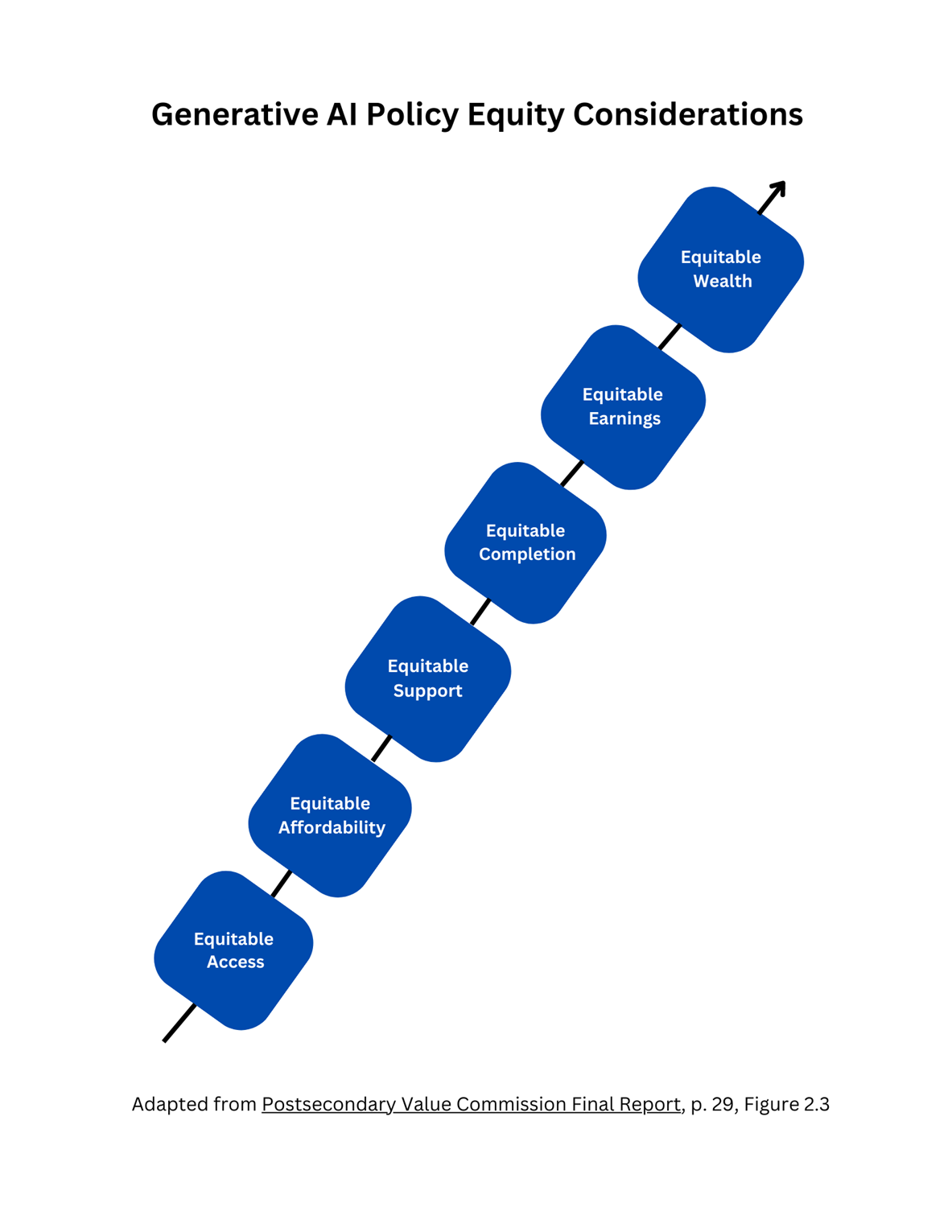You have /5 articles left.
Sign up for a free account or log in.
Post-pandemic higher education just got interesting. Generative artificial intelligence models such as ChatGPT—released publicly in November 2022—have higher education administrators, faculty and students scrambling to respond to this powerful technology. Pundits include those who fear that the college essay is dead as well as those who counter that the college essay is still very much alive, with many other observers landing somewhere in the middle. Peril and promise. Worry and wonder.
Generative AI is not going to go away. Nobody knows today what generative AI’s capabilities and applications will look like in the future, but all indications point to generative AI becoming a routinely accepted and widely used technology in all areas of higher education, from essay writing to syllabus creation to course scheduling and advising, by the end of 2023.
We propose that higher education administrators and faculty members respond to generative AI:
- with speed (now)
- with strategic purpose
- with inclusive focus on equitable student value
Need for Speed
A January 2023 survey of nearly 4,500 professionals shows that 27 percent have already used ChatGPT or some other generative AI tool to assist their work. We should assume that college and university students are being even more adventurous. Responding to possible rule or code of conduct violations by student or faculty use of generative AI without clear generative AI-specific policies in place invites unnecessary challenges. Waiting to see what other institutions do or simply avoiding the hard work of engaging all stakeholders in generative AI policy discussions is an understandable but ineffective reflex.
Strategic Purpose
Start your generative AI policy discussion journey by identifying key questions to consider. Here are some possibilities:
- What does it mean to learn with generative AI or AI more broadly?
- How can AI-assisted learning be measured?
- What should count as cheating with generative AI?
- Is the concept of cheating even the right one to apply to generative AI learning policy discussions?
- Are there cases in which generative AI use should be prohibited?
- How might such prohibition be enforced equitably?
- How should we think about student success in this new world of AI?
- How might generative AI be used to promote student economic success and mobility after graduation through skill acquisition and job training?
Be sure to include all relevant stakeholders as you ask questions. Recruit student leaders and interested faculty members to join discussions. Listen flexibly. The goal should not be to create a comprehensive, static policy but rather policy guidelines that can respond with agility to emerging shifts and advances in generative AI capabilities over time. Here are some possible policy issues to discuss:
- Equity in access to generative AI tools, training and potential value created by use of generative AI.
- Training of administrators, faculty members and students on how to properly and most effectively use generative AI.
- Transparency of all communications about generative AI policies and best practices.
- Proper attribution by students regarding any text or images generated by generative AI and submitted for evaluation, including identification of the specific generative AI prompt used.
- Privacy of personal information that might be revealed by generative AI without permission.
- Security of data and information from hacking or breaches.
- Inclusion of all stakeholders who might gain value from access to and use of generative AI.
- Accuracy and quality of data and information generated by generative AI.
- Crisis response protocols for reacting quickly to negative impacts of generative AI.
- Postsecondary value promotion through strategic use of generative AI to eliminate or narrow college completion gaps and to improve postsecondary outcomes including meaningful employment opportunities.
Inclusive Focus on Equitable Student Value
We recognize that specific generative AI policies created by colleges and universities should reflect the unique features of each institution’s learning mission, student demographics and curriculum. However, we propose that administrators and faculty members anchor all generative AI policy and use considerations and discussions with all pertinent stakeholders around promotion of equitable student value.
We borrow from the May 2021 Postsecondary Value Commission report to define “student value” as a combination of positive student learning gains during the postsecondary experience and positive long-term economic returns for students received postgraduation relative to postsecondary education costs incurred.
The Generative AI Policy Equity Considerations image below is adapted from the Postsecondary Value Commission report’s conceptualization of the pipeline to equitable value.
 Colleges and universities must ensure that all students have accurate and balanced understanding of generative AI capabilities and trends and free access to generative AI tools that can promote academic and long-term career success.
Colleges and universities must ensure that all students have accurate and balanced understanding of generative AI capabilities and trends and free access to generative AI tools that can promote academic and long-term career success.
Generative AI tools already are being deployed successfully by colleges and universities, for example to power predictive analytics for use in academic advising. A senior administrator at Georgia State University cites the use of predictive analytics and “data-driven, personalized advising” as a major reason the university has increased its graduation rate by 35 percent over the last 15 years, with no disparities in graduation rates by race or ethnicity.
A key principle of the Universal Design for Learning Guidelines created to help learners become “expert learners” is to provide learners with multiple options for “engagement,” “representation” and “action and expression.” Our challenge is to try to understand how, when and why use of generative AI by students and faculty can be an equitable and effective option for learning.
If higher education administrators and faculty members respond to the uncertainties of our new generative AI present and future with speed, with strategic purpose and with inclusive focus on equitable student value, we have an opportunity to contribute positively to higher education, economic mobility and social good.




